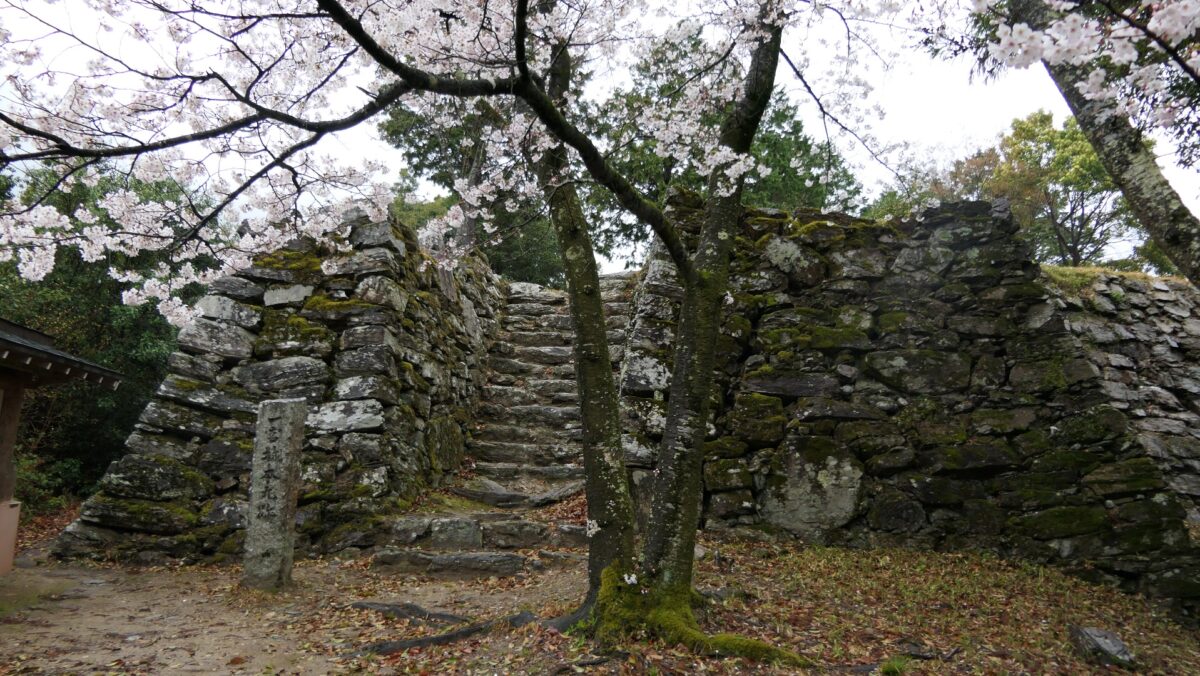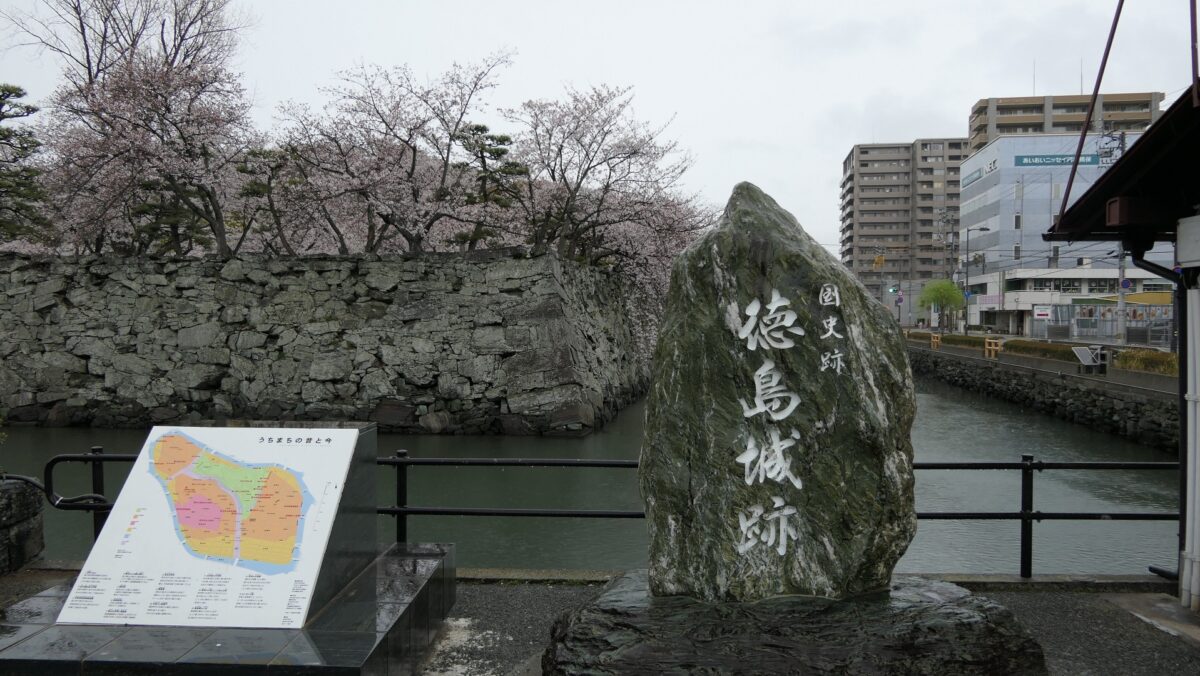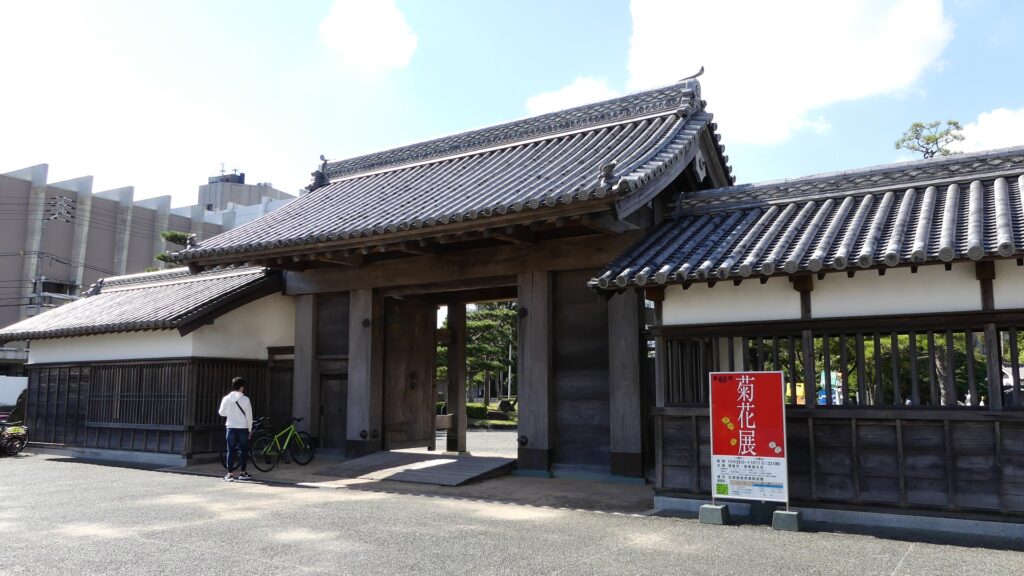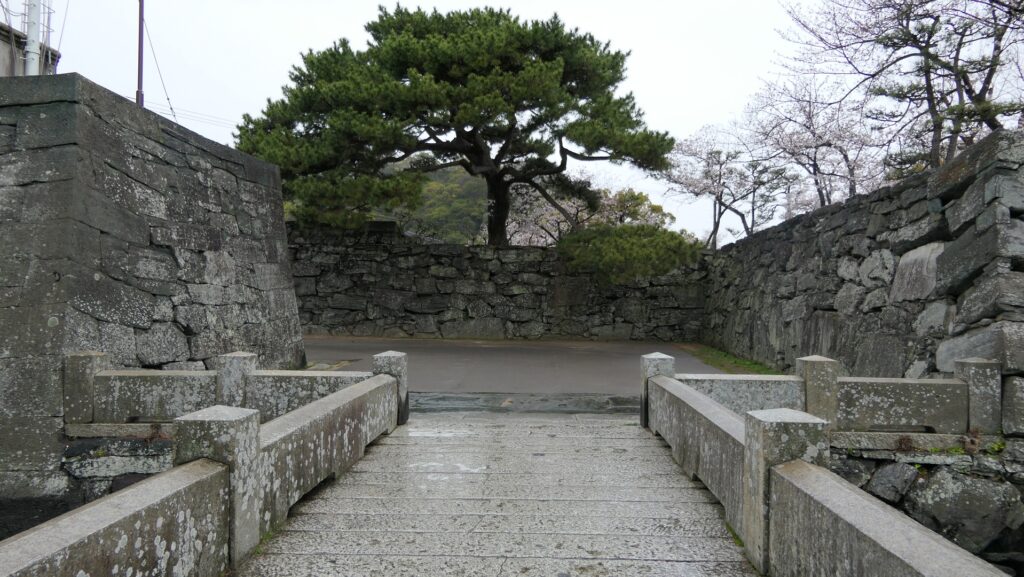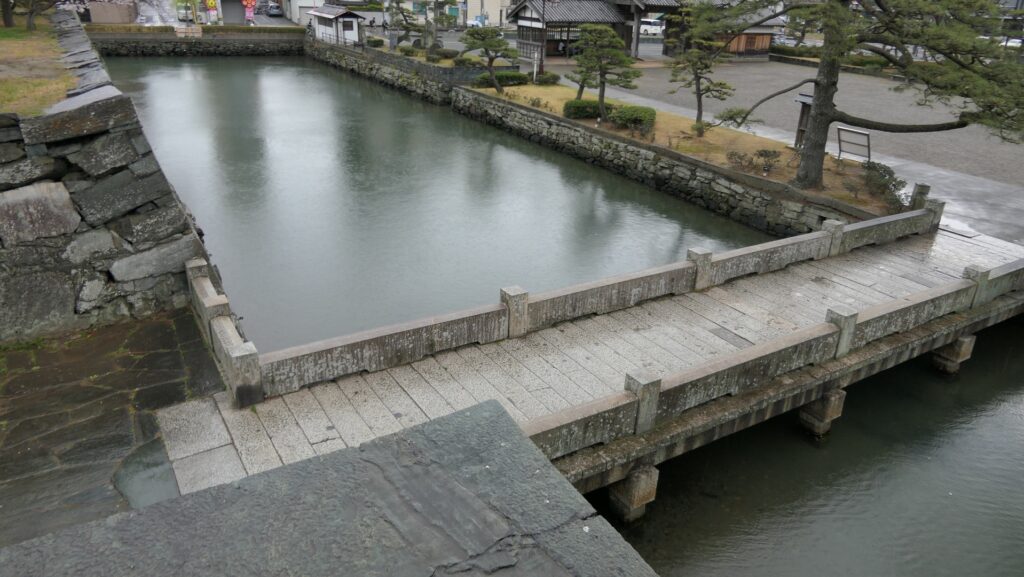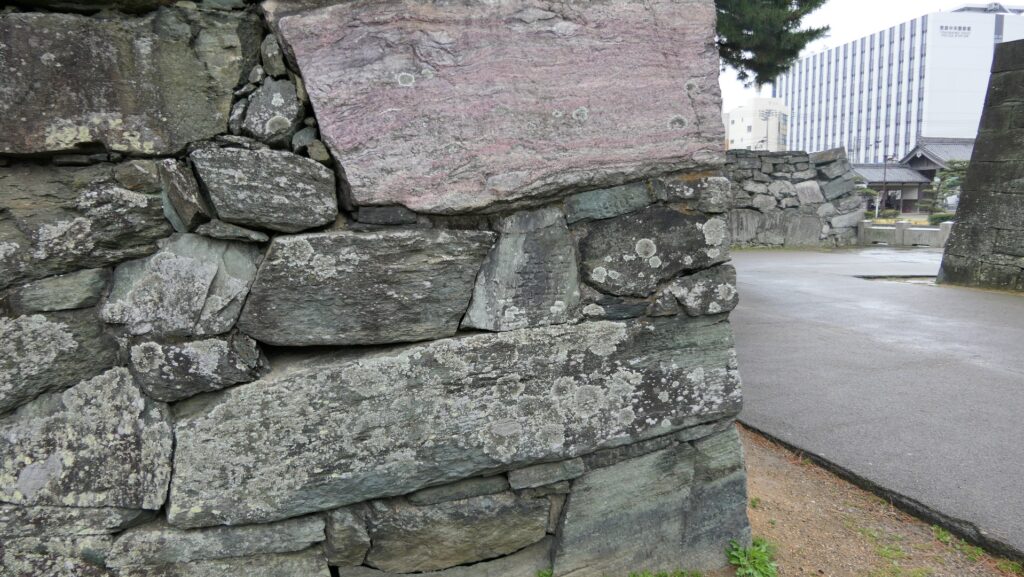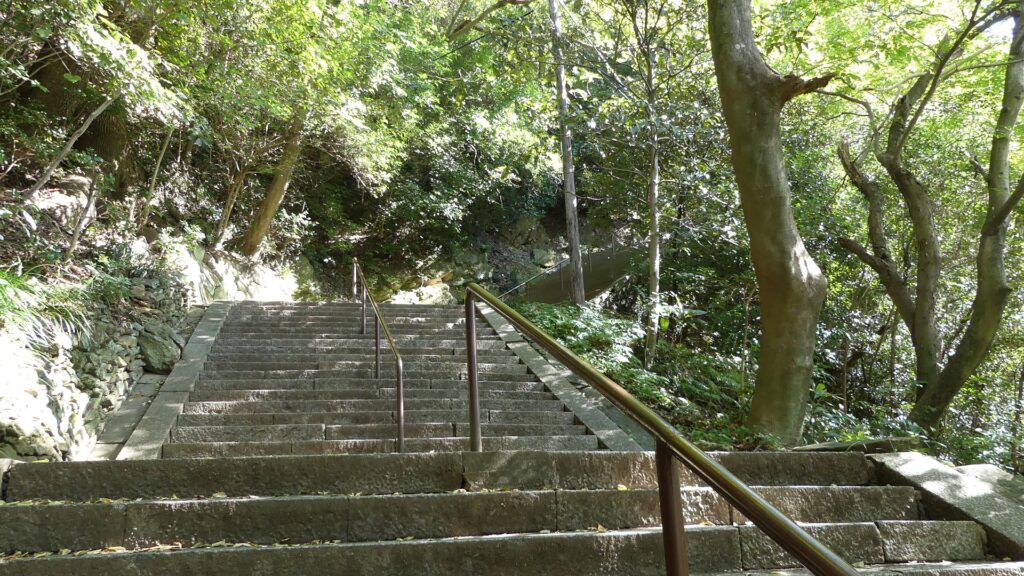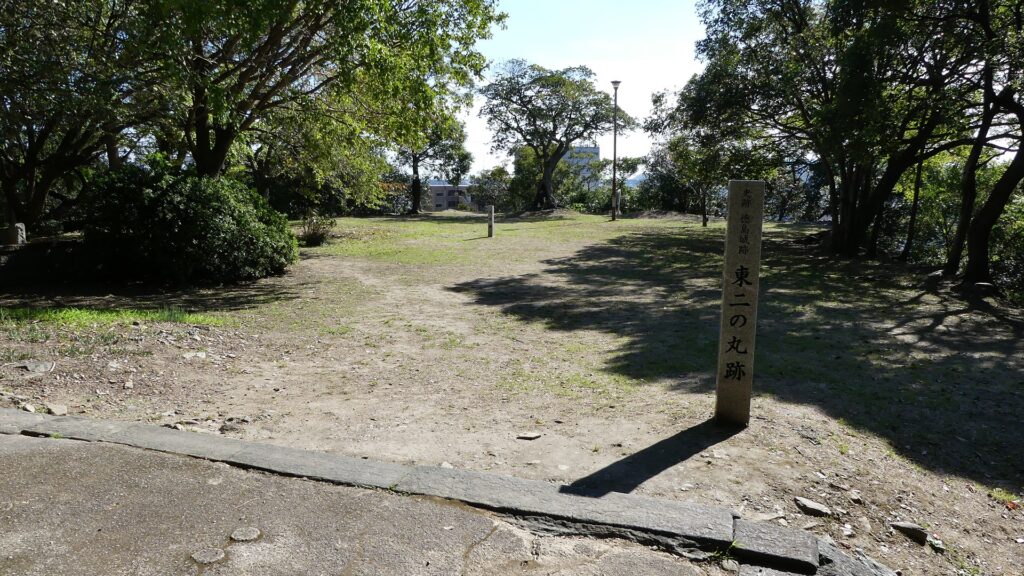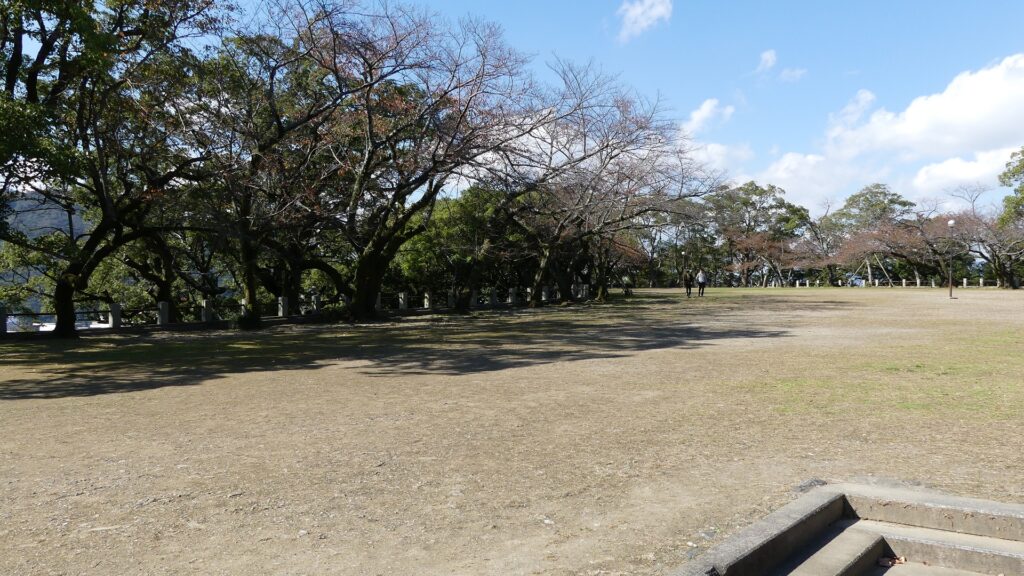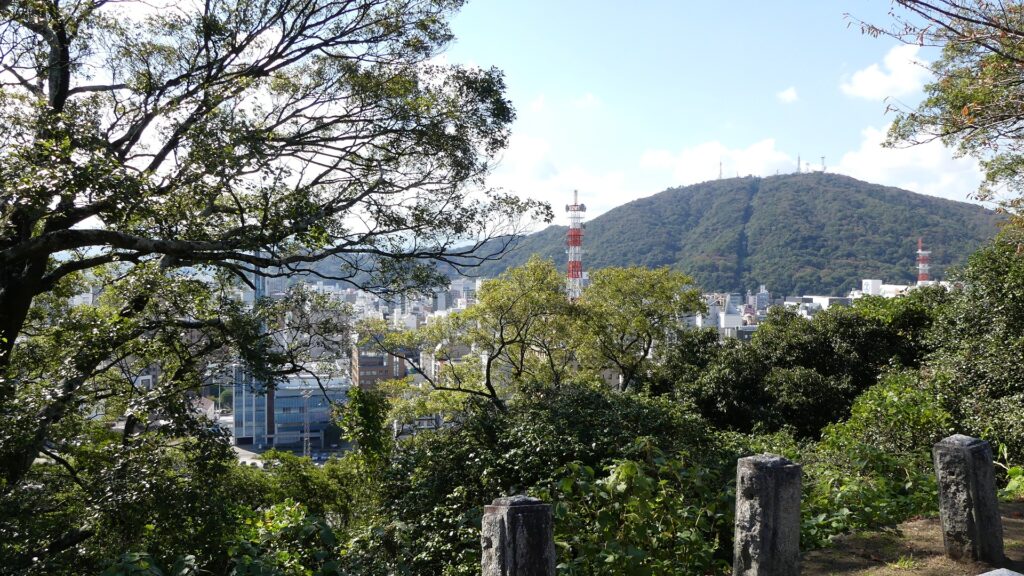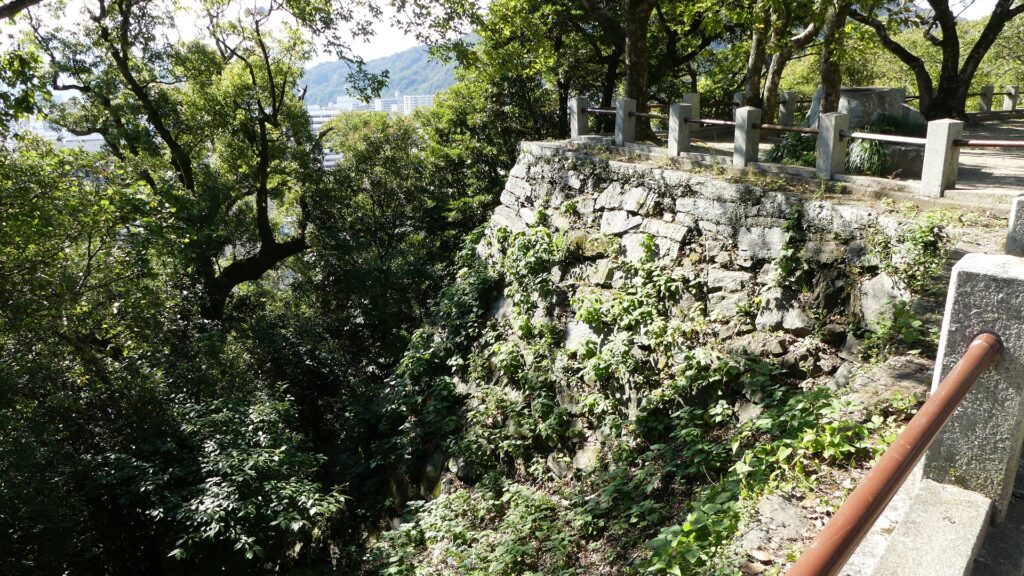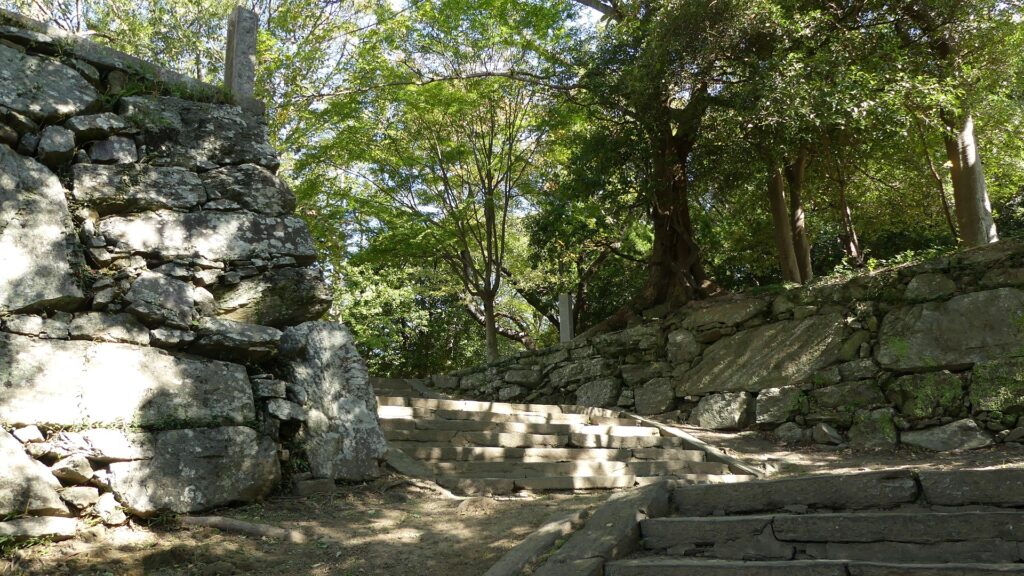Features
Well-developed Trail to Castle Ruins
If you drive to the ruins of Ichinomiya Castle, you will go through the route on the narrow area sandwiched by Akui-gawa River and mountains. You can see that it is a good location for defending the castle. The entrance of the trail to the ruins is opposite of the Ichinomiya Shrine. You will need to climb to the top of the 144m high mountain, but the trail is well developed with stone steps.

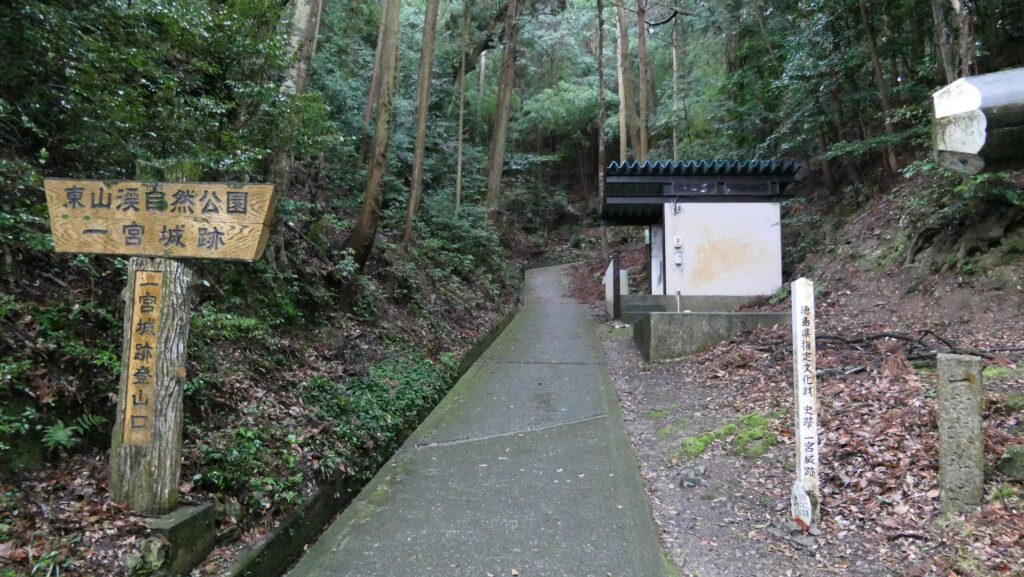
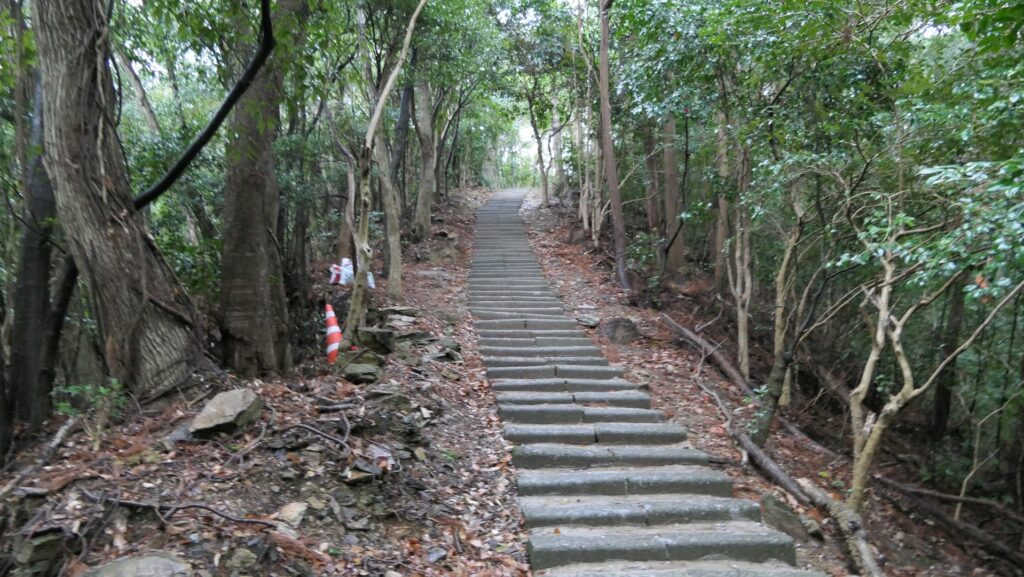
After climbing for a while, you will see a Vertical Moat or Tate-bori on the slope along the trail to prevent enemies from attacking. If you go to the branch nearby, you can see the ruins of the Warehouses.
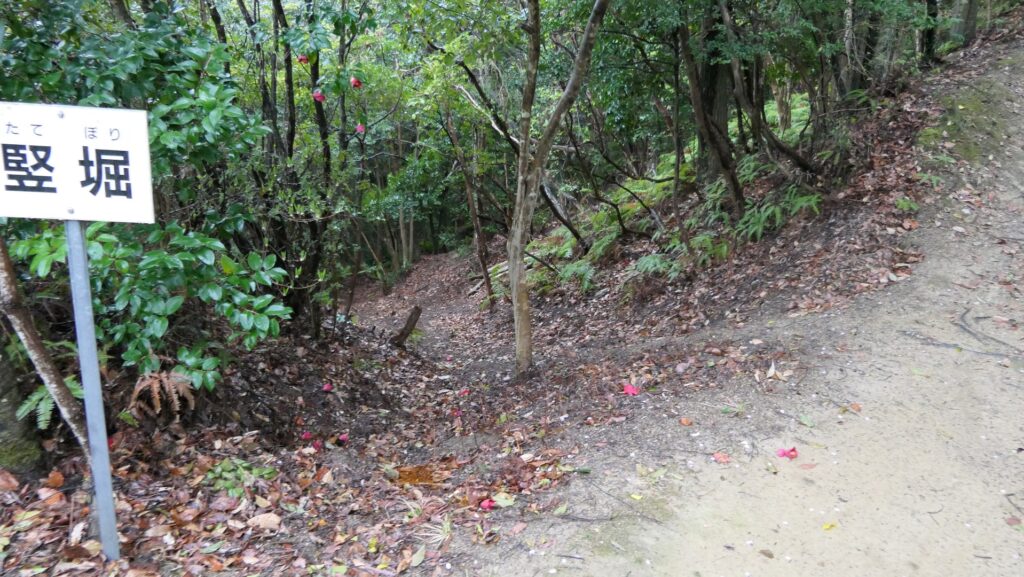
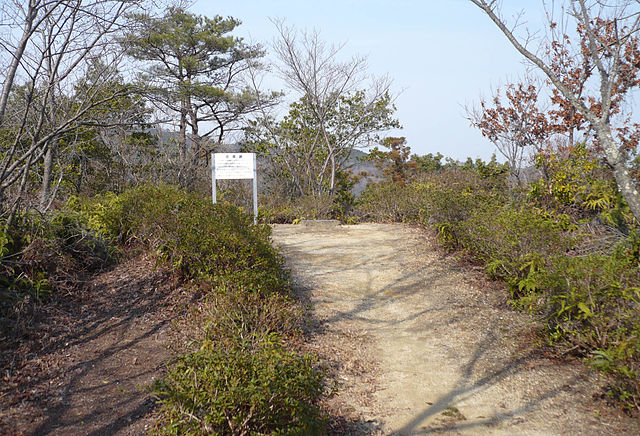
Defense System using Natural Terrain
Going back to the main trail, you will reach an artificial steep cliff called Kiri-gishi under several enclosures. You can also see a fountain at the foot of the cliff. You will need to climb a zigzagged trail on the cliff to go further.

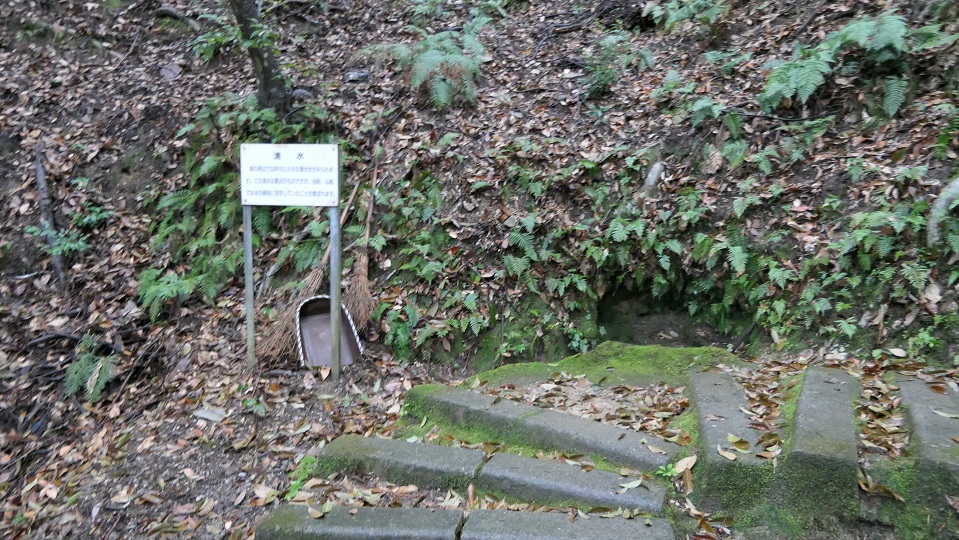

Even after climbing, you will still be under the bottom of an artificial valley called Hori-kiri. Enemies could have been counterattacked from the enclosures above. The valley divides the main portion of the castle and the Saizo-maru Enclosure. If you turn left at the valley, you will reach the Saizo-maru Enclosure. This enclosure is also called the Third Enclosure. “Saizo” originates from the name of the retainer who was responsible for the enclosure.

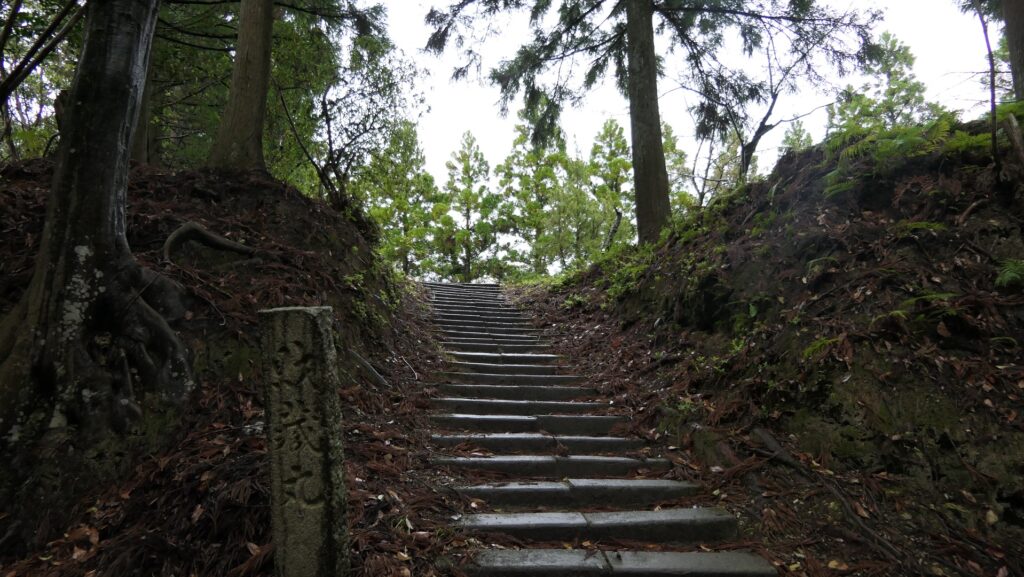

Going to Center of Castle
If you turn right at the valley, you will reach the ruins of the gate for the main portion which have two main enclosures – the Myojin-maru Enclosure and the Main Enclosure. These enclosures are connected by a long and narrow enclosure called the Belt Enclosure or Koshi-guruwa
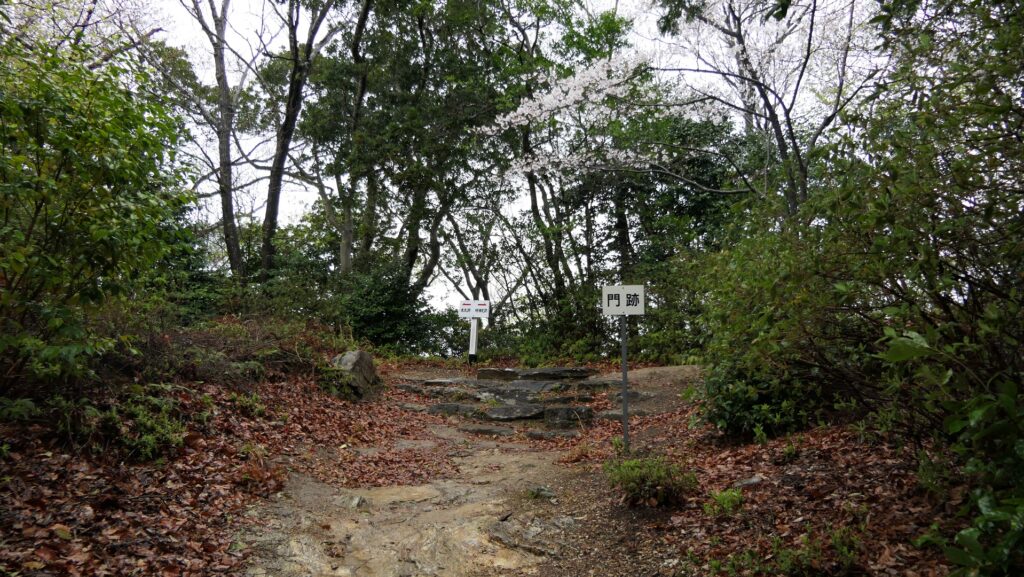
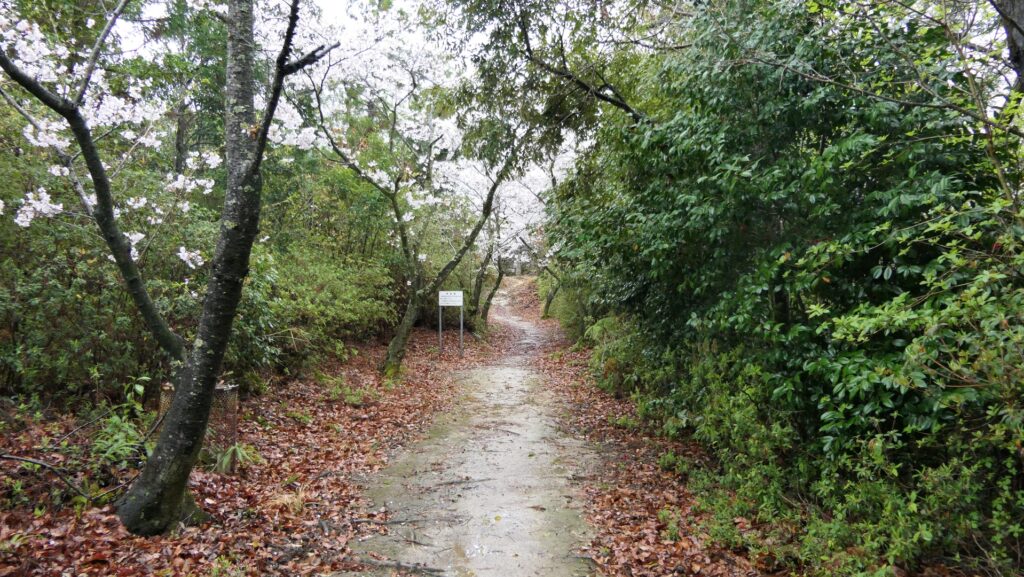
If you turn right again at the gate ruins, you will be in the Myojin-maru Enclosure. This enclosure is also called the Second Enclosure and the spot where the ruins of the building with veranda, maybe for sightseeing, was found. You can even now see a good view of the center of Tokushima Prefecture to the east.

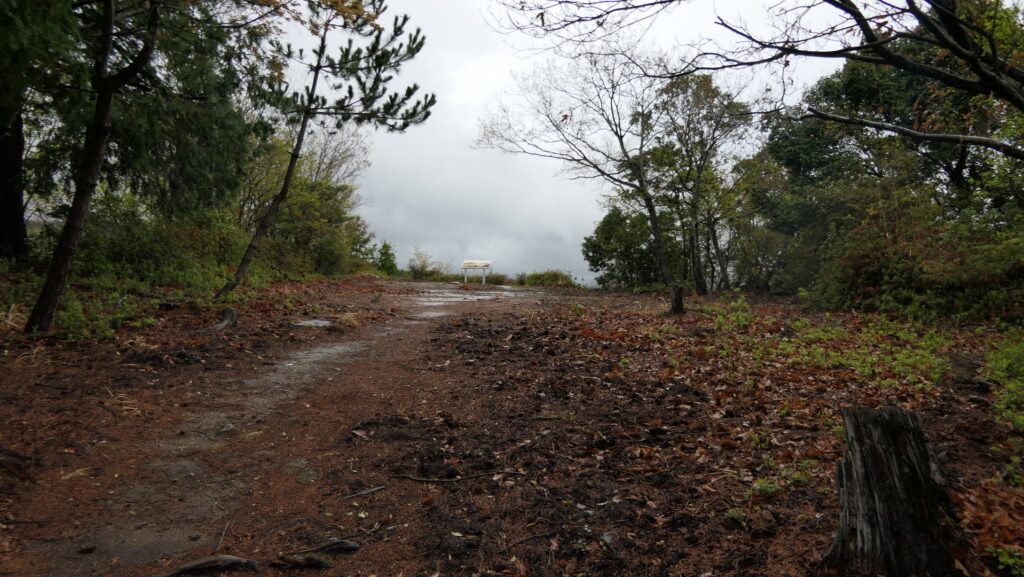
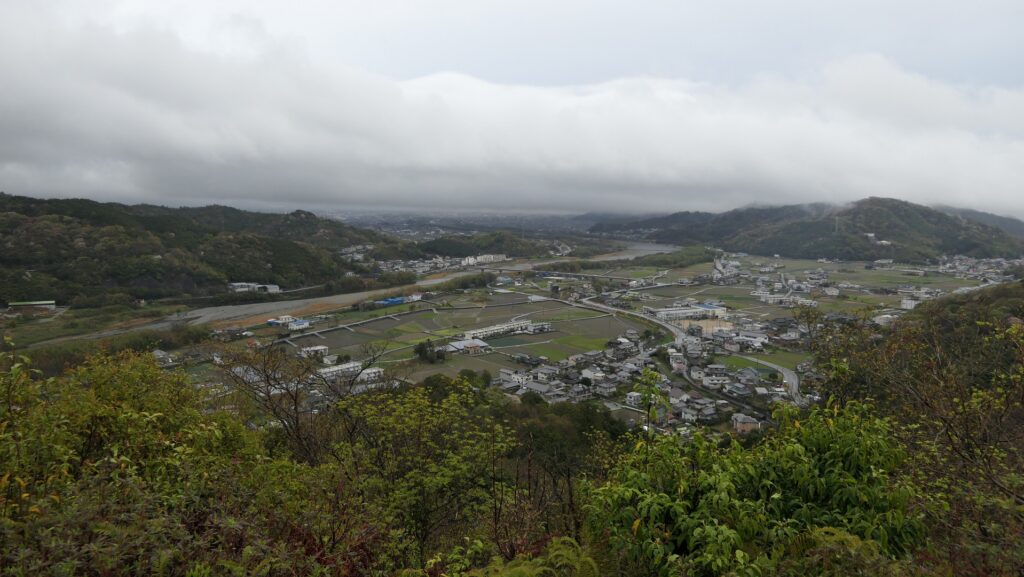
Great Stone Walls of Main Enclosure
If you go back to the gate ruins and go left from the front of it, you will finally reach the Main Enclosure on the top of the mountain. You may be surprised to suddenly see the great stone walls which were built by the Hachisuka Clan. The stone walls of this castle are very rare and beautiful because they were piled up using stones with a dark-green striped pattern called chlorite-schist. These stones are also known as Green Stones of Awa. The same pattern of stone walls can also be seen at Tokushima Castle that the Hachisuka Clan built after they used Ichinomiya Castle.

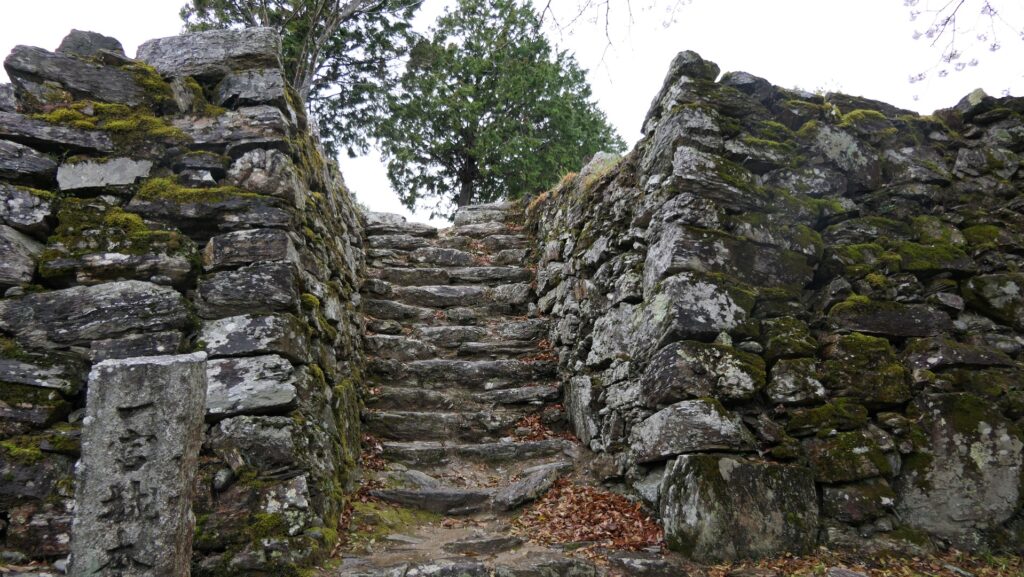
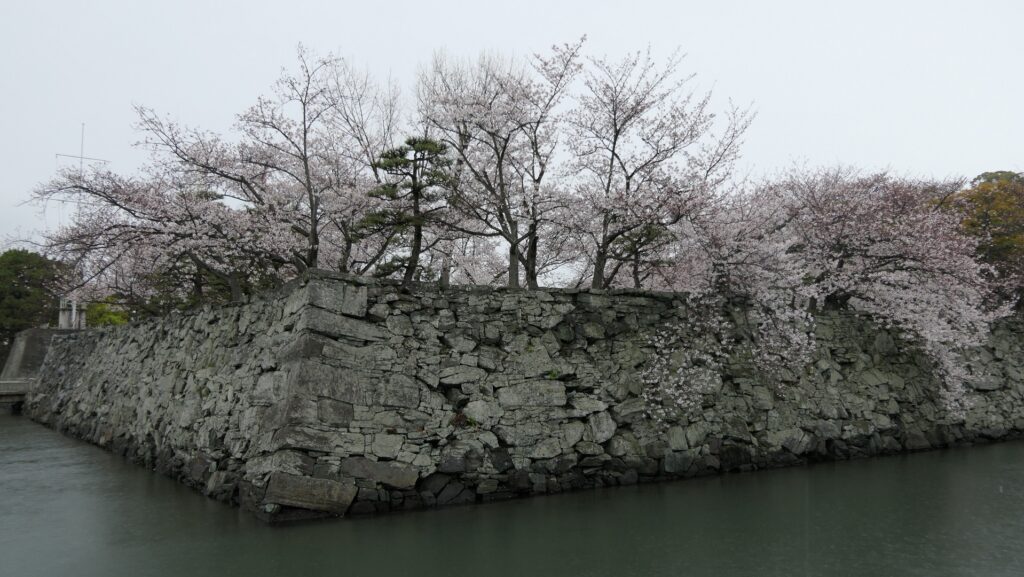
There is only the small building of Wakamiya Shrine. The stone foundations of the Main Hall for the lord were found recently, which were also built by the Hachisuka Clan. You can also see a good view of the area around, including Akui-gawa River.
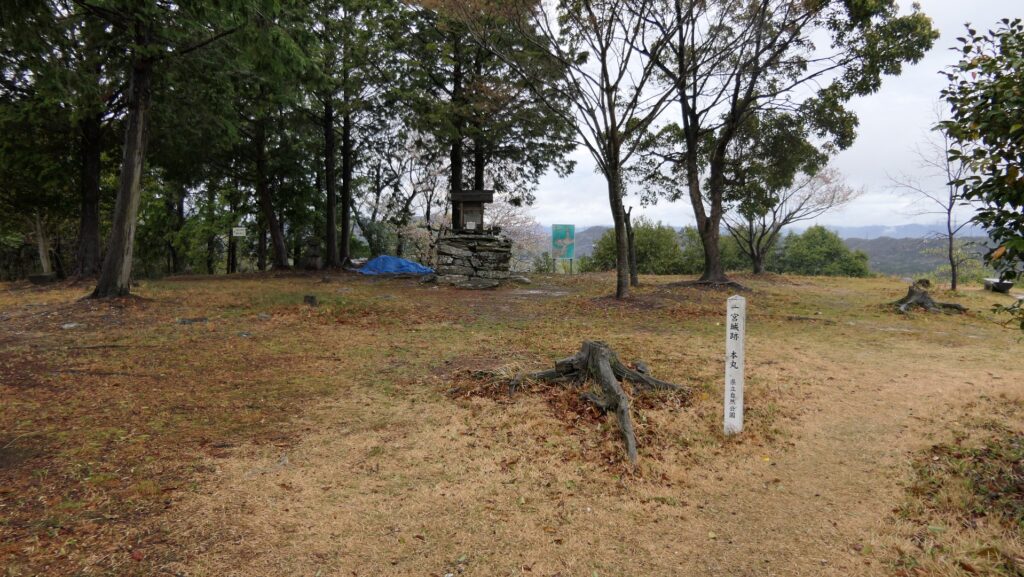
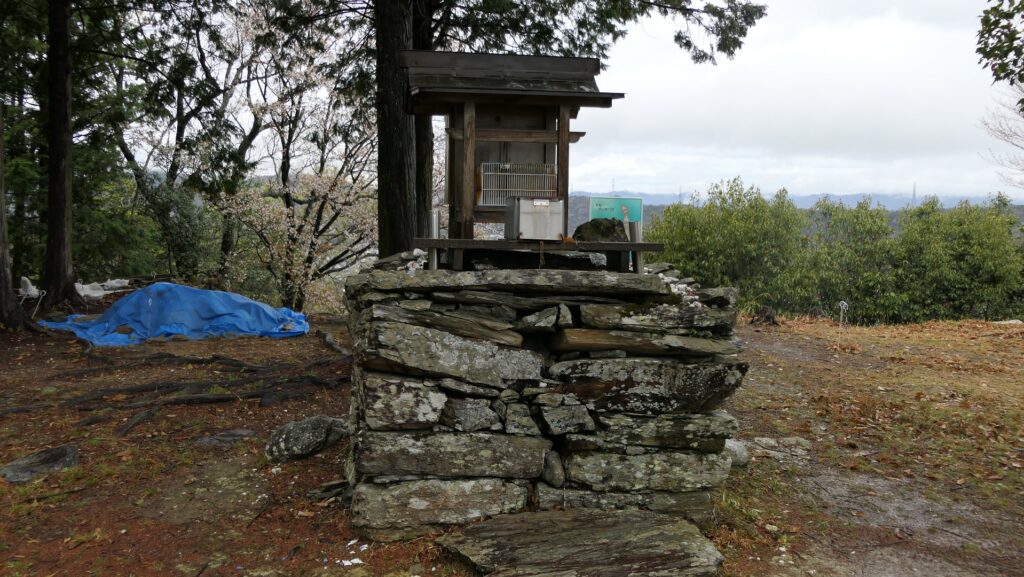
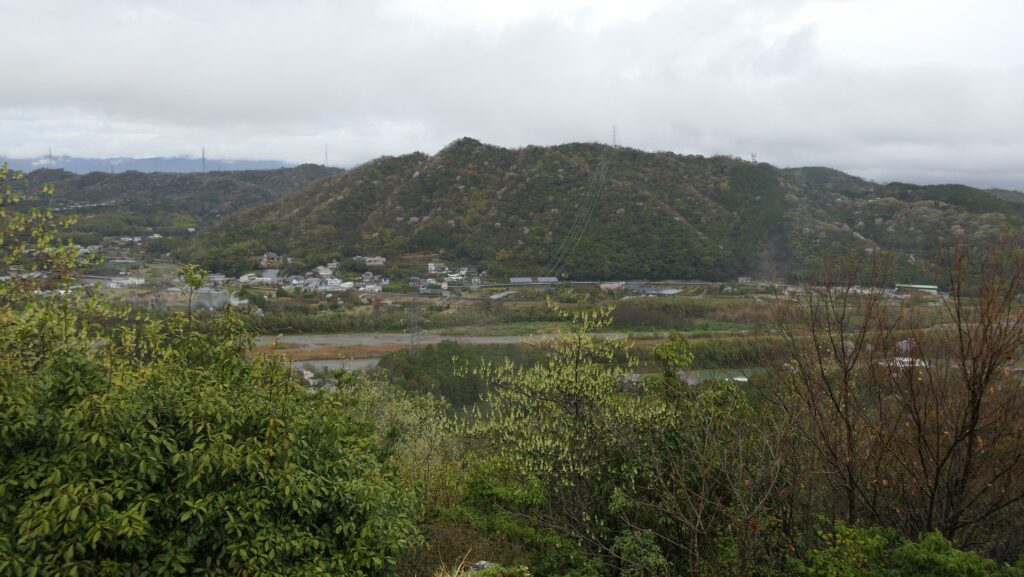
To be continued in “Ichinomiya Castle Part3”
Back to “Ichinomiya Castle Part1”

